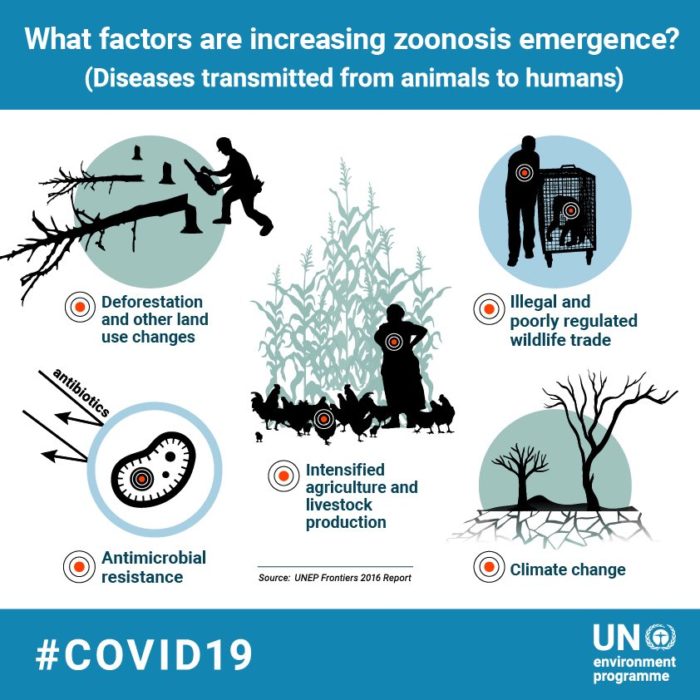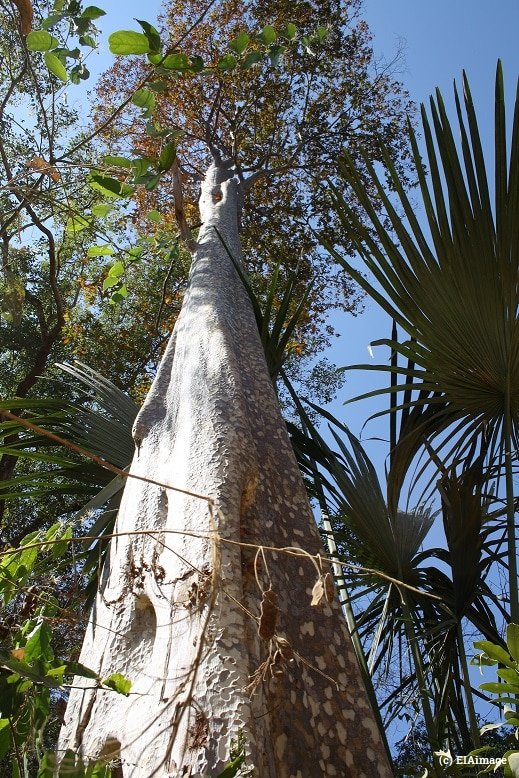Self-harming – how deforestation drives emerging diseases and pandemics such as coronavirus



As the world battles the coronavirus pandemic, it’s worth remembering the pivotal role played by human-driven deforestation in emerging diseases such as SARS and HIV.
There has been a growing body of scientific literature clearly demonstrating that when deforestation rises, so too do lethal outbreaks of disease in humans.
The deadly Ebola outbreaks in West and Central Africa, for instance, have been linked to regional deforestation.
 Deforestation and degradation of old growth forests through activities such as converting land for agriculture, mining and selective logging open up previously undisturbed areas and pave the way for a suite of diseases to ‘jump’ to humans.
Deforestation and degradation of old growth forests through activities such as converting land for agriculture, mining and selective logging open up previously undisturbed areas and pave the way for a suite of diseases to ‘jump’ to humans.
Logging, especially, also opens forests to new areas previously inaccessible to hunting. Widespread global travel and wildlife trade in turn facilitate the spread of these diseases into deadly and transnational threats to humanity.
As humans relentlessly encroach into intact ecosystems, they alter complex dynamics between reservoirs of a disease (wild ‘host’ animals such as monkeys, rodents or bats) and the various animals that can pick a pathogen up and further spread it (‘vectors’ such as mosquitos, ticks or pigs) to humans.
As with people, all life forms can suffer from disease, from trees and shrubs to wild animals. When the habitats of wild animals are invaded and disturbed, they are forced to share their space with humans and their domesticated livestock. This is how deforestation provides an ideal opportunity for what scientists call ‘zoonotic spill-over’ – when a pathogen, such as a virus or bacterium jumps from a host animal, often via a vector animal and then to a human.
After deforestation, displaced wild bats are often forced to feed and breed in farmlands and can infect livestock, which in turn infect humans. When Indonesia burned much of its forest for palm oil plantations in the 1990s, bats harbouring the Nipah virus flew to Malaysian farms to feed on fruit trees. The disease jumped from bats to people via pigs – and had a human mortality rate of up to 74 per cent.
The clearing of forests for palm oil plantations in West Africa also led to spill-over of the Lassa virus, which triggers a haemorrhagic fever like Ebola in humans and can kill 30 per cent of the infected.
Like bats, certain mosquito species thrive in degraded forests. Being close to the forest, they can easily pick up pathogens from displaced wild animals. These mosquitos are known to particularly love feeding on humans and are much better at spreading diseases such as malaria than their counterparts found in dense, intact forests.
A recent study directly linked an increase in forest clearance for palm oil production in Malaysian Borneo to an increase in malaria. Likewise in South America, one region in Peru saw cases of malaria skyrocket from 600 per year to 120,000 after a road was built into intact old-growth forest and people began clearing land for farming. And in Brazil, clearing just four per cent of the forest resulted in a nearly 50 per cent increase in human malaria cases.
Many of the world’s neglected tropical diseases, which affect more than a billion people each year, have emerged from wildlife through deforestation and degradation.
These diseases include the arboviruses spread by arthropods (invertebrates, often insects) which continue to plague forested countries all over the world. Several mosquito species, for example, can spread debilitating viral diseases such as zika, chikungunya, dengue or yellow fever – all of which are understood to have first originated as a result of encroachment into African forests.
As we face the coronavirus pandemic, we must listen to the science and reflect on history. We have always known that outbreaks can wreak havoc on society; malaria has even been suggested as a factor in the fall of the Roman Empire.
We know intact, old-growth forests are vital for combatting climate change, are home to most of the worlds plant and animal species, support the livelihoods of millions of people and provide essential services such as clean water. Protecting these forests is also vital to halt the emergence of novel diseases.
 We can never truly eliminate the risk of new diseases emerging – it has happened throughout human history – but we can though minimise our risk, just as lockdowns around the world are minimising our risk of exposure to coronavirus, by not destroying our remaining forests.
We can never truly eliminate the risk of new diseases emerging – it has happened throughout human history – but we can though minimise our risk, just as lockdowns around the world are minimising our risk of exposure to coronavirus, by not destroying our remaining forests.
This does not mean we must steer clear of forests – after all, forests provide livelihoods and homes for people and are important places for cultural diversity, scientific research and mental health. But we must stop the destruction of intact forests. By doing so, we can help reduce the risk of newly emerging diseases such as the coronavirus (aka COVID-19). More than ever, the world needs healthy, intact biodiverse forests.
This pandemic is opportunity for people to realise that large-scale behavioural change is possible. About a third of forest loss has been attributed to the production of agricultural commodities such as palm oil or soy.
Looking to the future, we must ensure sustainable models of agricultural commodity production, development and trade are inclusive of people and protective of old growth forests.